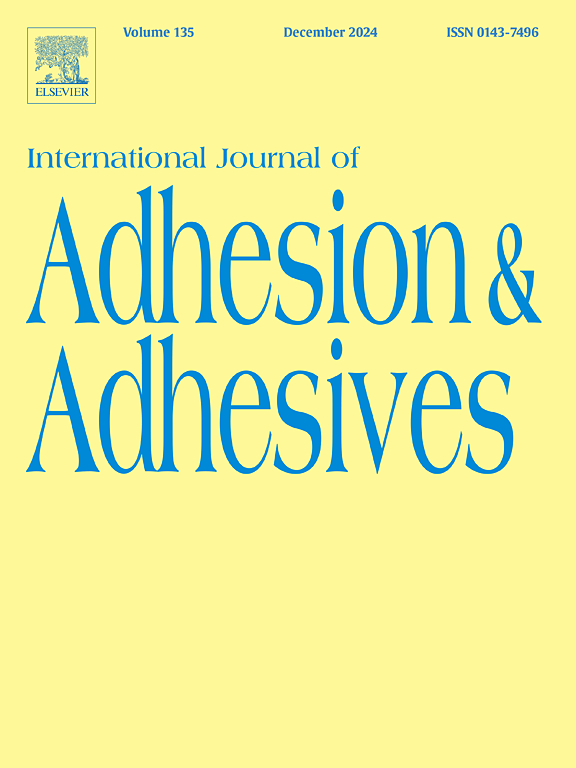Bond-slip failure characteristics of Fe-SMA-steel adhesively bonded joints
IF 3.2
3区 材料科学
Q2 ENGINEERING, CHEMICAL
International Journal of Adhesion and Adhesives
Pub Date : 2025-01-10
DOI:10.1016/j.ijadhadh.2025.103941
引用次数: 0
Abstract
The adhesively bonded method has gained increasing popularity in strengthening steel structures due to its excellent mechanical performance and efficient applicability, while the bond-slip failure characteristics of the Fe-SMA-steel bonded interface have received very limited attention. In light of this background, the bond-slip behavior of Fe-SMA-steel adhesively bonded joints is experimentally explored under shear tests in this study. Forty-five single-lap joints are tested to investigate the effects of adhesive type, adhesive layer thickness, steel plate thickness, and bond length. Test results indicate that the failure modes in Fe-SMA-steel adhesively bonded joints vary according to the adhesive used, resulting in distinct strain distributions. The bond capacity of the joints subjected to adhesive layer failure is higher than that of the joints subjected to interface debonding. Simplified bond-slip consecutive models of bonded interfaces with three types of adhesives are proposed and validated with experimental findings, featuring the predictive formulas of critical parameters including peak shear stress, local slip, and corresponding ultimate slip at the peak shear stress. Also, theoretical models for bond capacity and effective bond length of Fe-SMA-steel interface are proposed by introducing stiffness reduction coefficients into the existing studies on CFRP-steel interface. Compared to experimental outcomes, the revised model can offer satisfactory predictions and practical guidance for the interfacial behavior of Fe-SMA-steel adhesively bonded joints.
求助全文
约1分钟内获得全文
求助全文
来源期刊

International Journal of Adhesion and Adhesives
工程技术-材料科学:综合
CiteScore
6.90
自引率
8.80%
发文量
200
审稿时长
8.3 months
期刊介绍:
The International Journal of Adhesion and Adhesives draws together the many aspects of the science and technology of adhesive materials, from fundamental research and development work to industrial applications. Subject areas covered include: interfacial interactions, surface chemistry, methods of testing, accumulation of test data on physical and mechanical properties, environmental effects, new adhesive materials, sealants, design of bonded joints, and manufacturing technology.
 求助内容:
求助内容: 应助结果提醒方式:
应助结果提醒方式:


